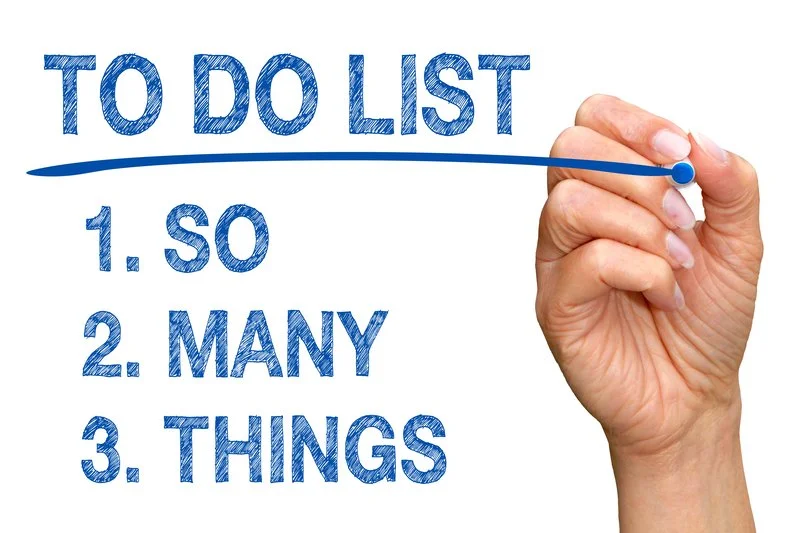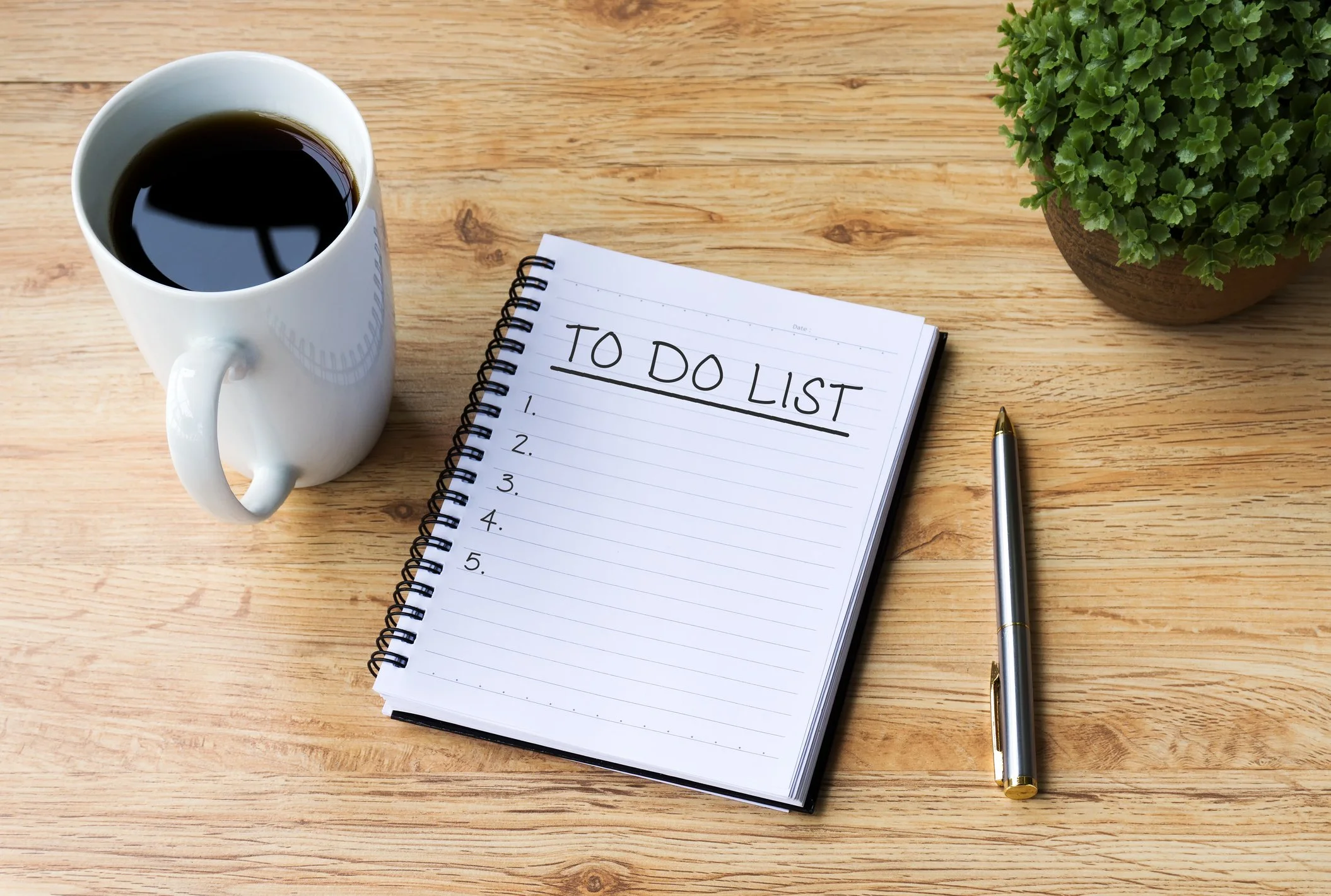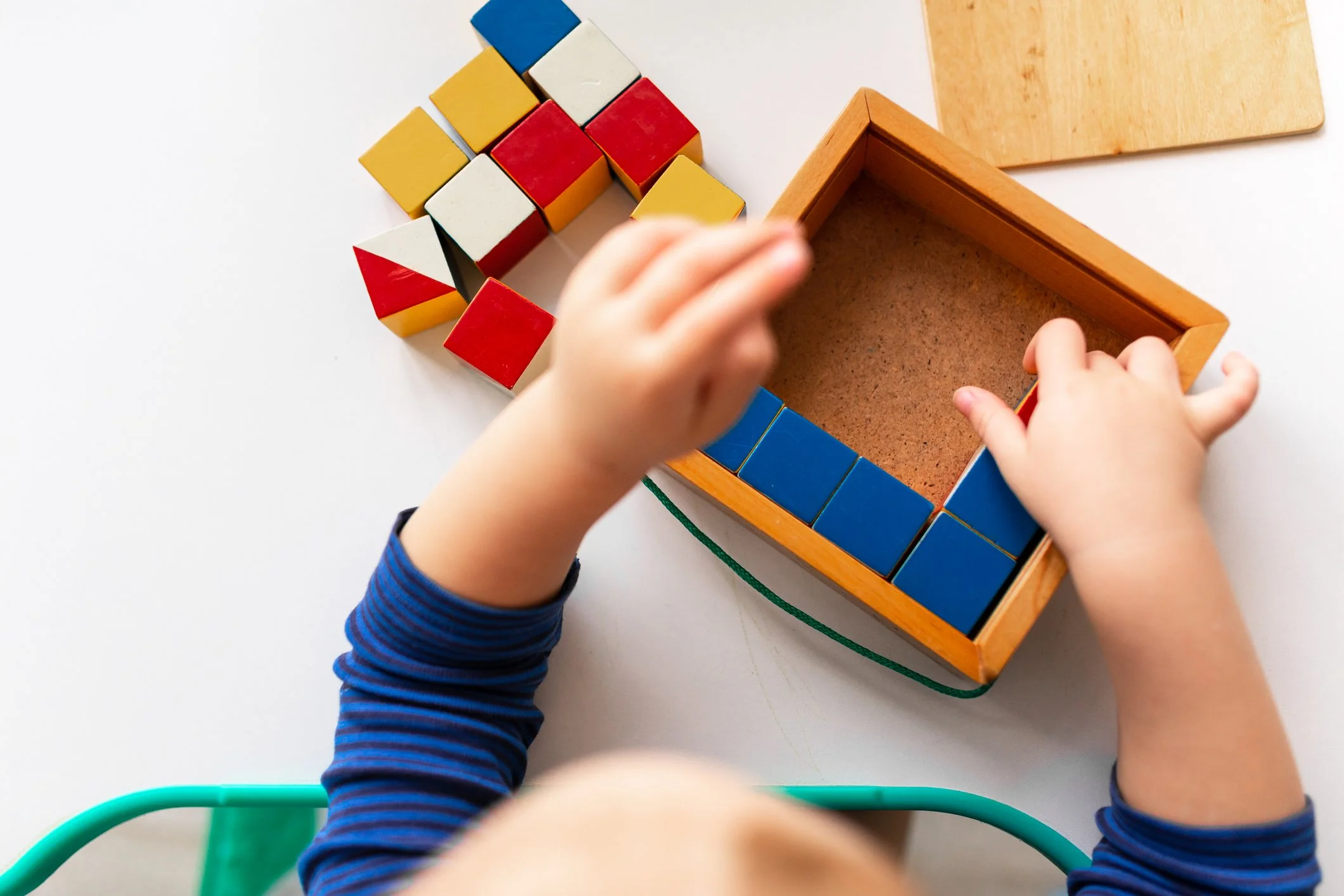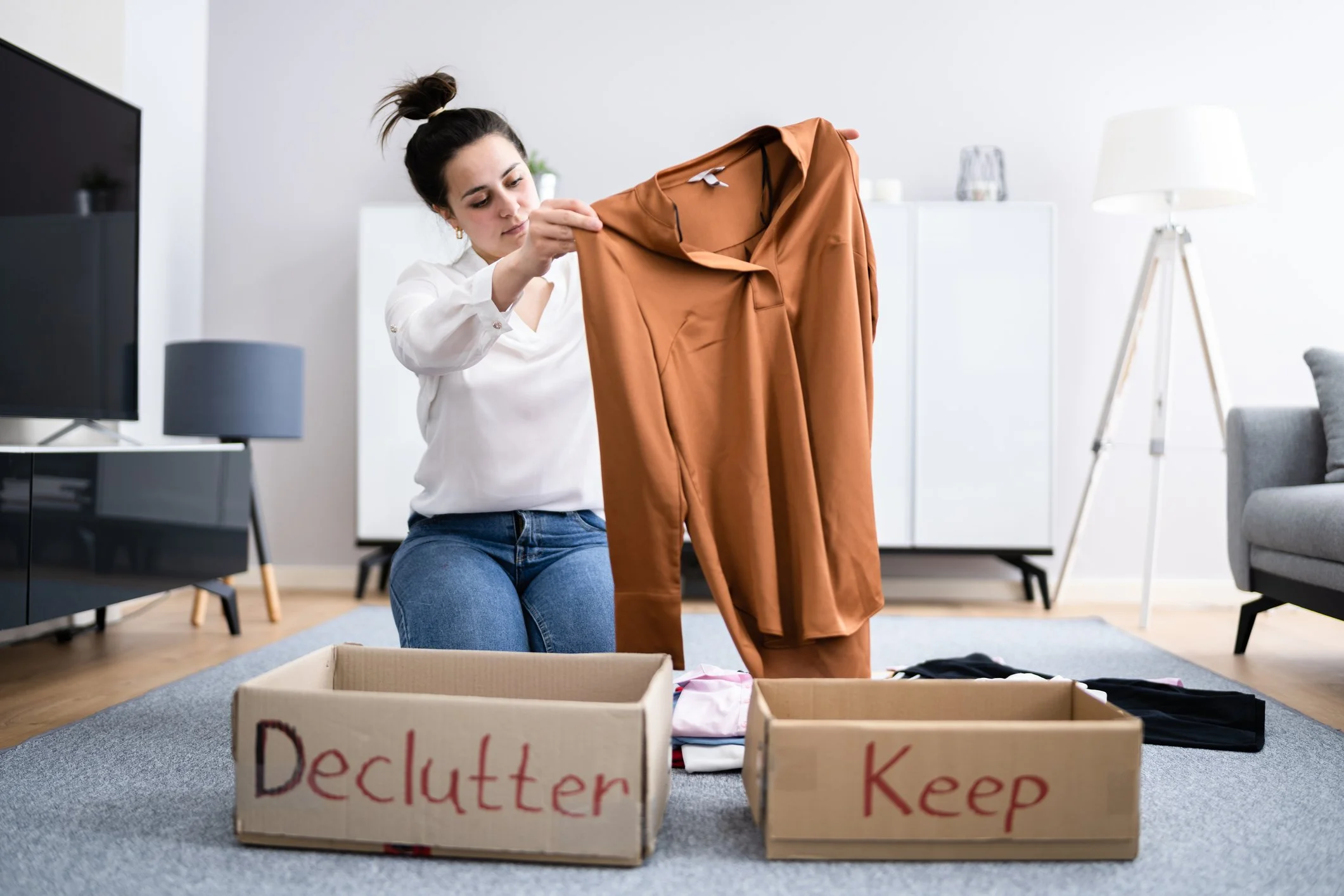January is “Get Organized Month”, an official holiday designated many years ago by the professional organizing industry. It makes total sense because January is the time when we have this urge to take control of our spaces, our schedules, our habits, so that we can achieve whatever other goals we have set for the year.
I’m often asked, “What do I mean, never check email in the morning? At all?” I’m not against this powerful communication tool, but it’s also highly addictive. Research shows people now spend an average of 19 hours a day on screens. Can you just imagine all the things you could check off your to-do list by cutting down your email time?
Happy Summer! I hope that wherever you are, you are enjoying the shift in rhythm that comes with longer days of sunlight, warm weather activities, opportunities to get together with friends, outdoor concerts and festivals, and the ability to connect to nature by just being outside.
To that end, we are kicking off a series called Self-Care Summer. From now until Labor Day, we’ll be sharing Blogs with concrete ways to re-fuel our bodies, minds, and souls.
Are you getting less done in a day than you used to? Do the days when you could speed through your to-do list, checking off one task after another, seem like a distant dream? I’ve lost count of the number of clients over the past few months who have told me that they used to be able to put fourteen things on their to-do list and knock them all out. Now, they put fourteen things on their list, but they're lucky if they get through eight of them. They end up feeling frustrated, disappointed, and like they're failing themselves.
We all have the best intentions to contain our work to the workday and create clear boundaries between our work and personal lives. But what happens when you truly must get back online to work in the evening after dinner, social or family time to keep on top of your workload? I hear it often from clients. It’s a common struggle to have more to do than fits in a workday.
Whether it’s paper or digital, there are a few principles I recommend to structure your to-do's so your list becomes approachable. The great unlock is to remember that a to-do is not connected to a when rarely gets done. Each to-do has to get assigned a day or a time. Otherwise, you're just hoping to do it when you remember it or when you have a free moment (which doesn’t ever seem to happen). Instead, with just a few actionable tips, your to-do list can transform into a realistic game plan to get your most important tasks done.
It’s not just retirement that can put us in this situation. Sudden job loss, illness, or choosing to stay home to raise kids all remove the external structure generated by our work lives. As much as we may sometimes feel slaves to our work schedules, the structure is also powerful and grounding, as an organizing principle for our lives. So, how do you organize your days to be meaningful and fulfilling when you are not tied to an outside schedule?
You can fortify your willpower with some very practical actions that make it easier to stay on track. Instead of just asking, ‘How do I maintain my discipline to eat healthy’, the question you can ask is, “How do I organize my time and space to encourage eating in a healthy way?” That slight shift in approach can set you up for success, giving you the scaffolding and support you need to follow through on your goals.
Organizing is about identifying what is important to you and arranging it in a logical way that gives you access to what you use and love so that you can live the life you choose.
Once you determine that your goal is to create a system that works for you, success begins with picturing your space when it’s done. How? Think Kindergarten.
The holidays are coming and after a couple of years of isolation, many of us are gathering again. You might be both excited and anxious about the thought of hosting a holiday event. Excited because it’s fun and life affirming to entertain. Anxious because your house might not feel holiday ready to you. The last thing we want is to be overwhelmed or stressed about having guests. We want ease, joy and to be able to open our doors and be with our friends and loved ones without worrying.
Research shows that multitasking isn’t really doing multiple things at the same time, it’s actually rapidly switching between tasks. And it turns out that this rapid switching is counter-productive, mentally draining and part of the reason we are so tired at the end of the day.
There have been a lot of discussions lately about the future of the work environment. There seems to be a disconnect between what employers want, and what their employees need. Many employers want things to remain as they were. However, many employees are now looking for a schedule that offers more flexibility. One that allows them more time to work at home, after its proven success over the past couple of years.
Whether the COVID-19 pandemic threw a wrench in your well-oiled exercise routine or you lacked a routine to begin with, one thing is certain: with gyms closed and more work and family demands on your plate than ever before, fitting exercise into your daily schedule has become yet another impossible chore. You know it’s important but even when you have the time, the idea of continuing to stare into your laptop screen for a 30-minute exercise class after a long day of working from home is… less than appealing. The good news is: home work-out videos and online exercise classes aren’t your only options for staying fit.
So you finally made it to bed. You’ve done your bedtime routine and you’ve turned off all the lights. You’re exhausted, fully prepared for sleep, but your mind just won’t stop racing — overwhelmed with thoughts, feelings, and to-dos. The longer it takes you to fall asleep, the more anxious and stressed out you become which, in turn, makes it even harder for you to drift off to sleep. Once your head hits the pillow, how do you actually relax into a peaceful slumber so that you receive the full benefit of a restful night? Here are a few ways to clear your head and surrender yourself to the pleasures of sleep…
Sleep is a fundamental component of our lives. It allows us to reset, recharge, and refuel, so that we can make the most of our days. Unfortunately, with so much weighing on our minds, the last few months have thrown many of us off our sleep game. Because sleep is such a critical aspect of our mental and physical health, now is just as good a time as any to get serious about the quantity and quality of our restful hours. And the best place to start is by renovating your bedtime routine.
You’re staring down the barrel of a seemingly endless to-do list. You know it’s time to get started, but where? Do you start with the smallest task or the largest task? The task you like most or the one you like least? The important one for yourself, or the urgent one for someone else? When it comes to prioritizing our to-dos, most of us tend to approach the situation with some degree of subjectivity. But this line of thinking often leaves us totally paralyzed — hovering over our to-do lists for who knows how long, trying to decide where to get started. The key, therefore, is to become as objective as possible when choosing which tasks to prioritize. That’s where the 3 Qs (The Three Questions) come in…
The #1 time management question to ask yourself when approaching any task is, “How long is this going to take?” Unfortunately, it’s all too easy to dramatically under- or overestimate how long tasks take based on how we feel about them. In order to be effective at time estimating, you must take your feelings out of the equation. These two exercises can show you how.
In the journey from chaos to order, people often find it easier to organize space than time, because space is something you can actually see. Stacks of papers, piles of clothing, and shelves full of knick knacks are visible. You can pick things up and move them around in your space to see how they fit. You can easily see when your plate (or your closet) is too full. Time on the other hand, is completely invisible. It’s something you feel and it feels … utterly amorphous. But, not anymore! It's time to make time tangible.
It’s one thing to learn how to productively work-from-home as an individual, but; collaborating with others in a remote workforce is an entirely different challenge. Not only must we learn to stay in sync with remote colleagues — many of whom may be operating under different hours, work-loads, or circumstances than ourselves — the vast majority of us must also learn to navigate working from home alongside our roommates, partners, parents and children — which presents another unique challenge. While some of our pre-existing systems can be applied to our new working conditions, it is also necessary to develop new and specific protocols to ensure that we can work with others — both within and outside of our households — in a productive, collaborative, and harmonious manner.
We’re all working with the same 24 hours in a day. But subtract time for sleep, personal and household maintenance — such as eating, showering, cooking, cleaning, etc. —, and work, and we’re left with precious few hours remaining. Naturally, we all want to make the most of this time; yet, you might be surprised how much time clutter is stealing from you. Understanding the root of the problem will help you release it for good.
Ok, ok, so your belongings seemed to multiply over the winter this year. Your pantry is so overstuffed, you can’t tell how many jars of peanut butter are hiding in there. Your closet is so overflowing with who-knows-what, it’s hard to find anything to wear. And your home office, let’s not even talk about those towering piles of paper you can’t bring yourself to look through. But there’s no better time than Spring to indulge the urge to purge — to rid yourself of all the stuff weighing you down, getting in your way, and stealing your energy rather than fueling you when you try to relax at home.
With great power, comes great responsibility. Twenty years ago, we may not have imagined a world in which every person could hold great power in the palm of their hand. And then came the smartphone… providing us with a whole lot of power, and a responsibility we may not have been prepared to accept. Ultimately, our devices have the power to allow us to connect or disconnect at will. And it’s up to us to decide how we use technology in our everyday lives — whether we allow it to lift or limit the quality of our social interactions.
A 75-year study at Harvard University, known as the Grant Study, found that close relationships — more than money, fame, IQ, or genes — are what keep people happy and healthy over a long life. It’s one thing to cultivate close relationships with people who live under our roof or within our community. But staying close to those who live further away is a whole different challenge. Often, we tend to rely on social media to do the heavy lifting, keeping us up-to-date on the lives of our friends and family members. But that can’t be all there is. For our long distance relationships to go the distance, it’s important to actively prioritize and nourish them.
The Beatles had it right… “All You Need is Love.” But not just the romantic kind. People thrive on friendships and human connection. Strong personal relationships are essential to our health and wellbeing. Yet, many of us are so overwhelmed by the demands of our day-to-day work and personal lives, we neglect to put the effort into our social lives. All too often, Friday night rolls around, and we realize we haven’t made any plans for the weekend. One of the best ways to ensure you connect with others on a regular basis is to create routines and habits that zap planning from the equation.
Often, we feel that our homes are not conducive spaces for socializing or nurturing our relationships. Just think, how many times have you wanted to invite guests over, but the living room was buried under a pile of clutter too time consuming to tackle? Or wanted to sit down and relax with your partner after a long day, but there was nowhere for you to just sit and be without your eye being drawn to a screen or something to clean? The good news is, you don’t have to reorganize your whole home until it looks like a perfectly manicured Pinterest board in order to create a space for connecting. In fact, all you really need is one or two spots dedicated to peaceful retreat. The elements that make up your space can be completely personal — the key is simply that the space be instantly relaxing, functional, and easy to maintain.
Having thousands, or tens of thousands, of unread emails piled up in your inbox can be debilitating — it’s overwhelming to sort through and navigate and just the thought of doing so is enough to zap your energy, causing you to feel defeated before you’ve even begun. But it doesn’t have to be this way! You can gain back control of your inbox without spending hours and hours, sorting through email by email, or creating a complex filing system. In fact, a small investment of time can allow you to hit refresh near-instantly, without losing any critical information. Here’s how…






























Spring is in the air. On my daily walk in Central Park this morning, it was a thrill to see the variety of Spring flowers blossoming all around….big patches of yellow daffodils and candy striped tulips on the ground below, white cherry blossoms and forsythia on the trees above. Combined with warmer temperatures, brighter sunshine and bluer skies, Spring ushers in a welcome burst of energy and the hope of new possibilities.